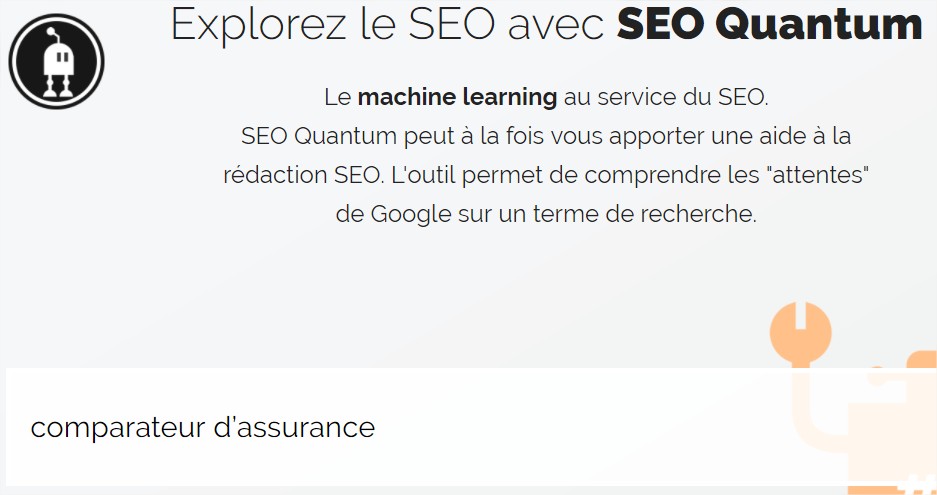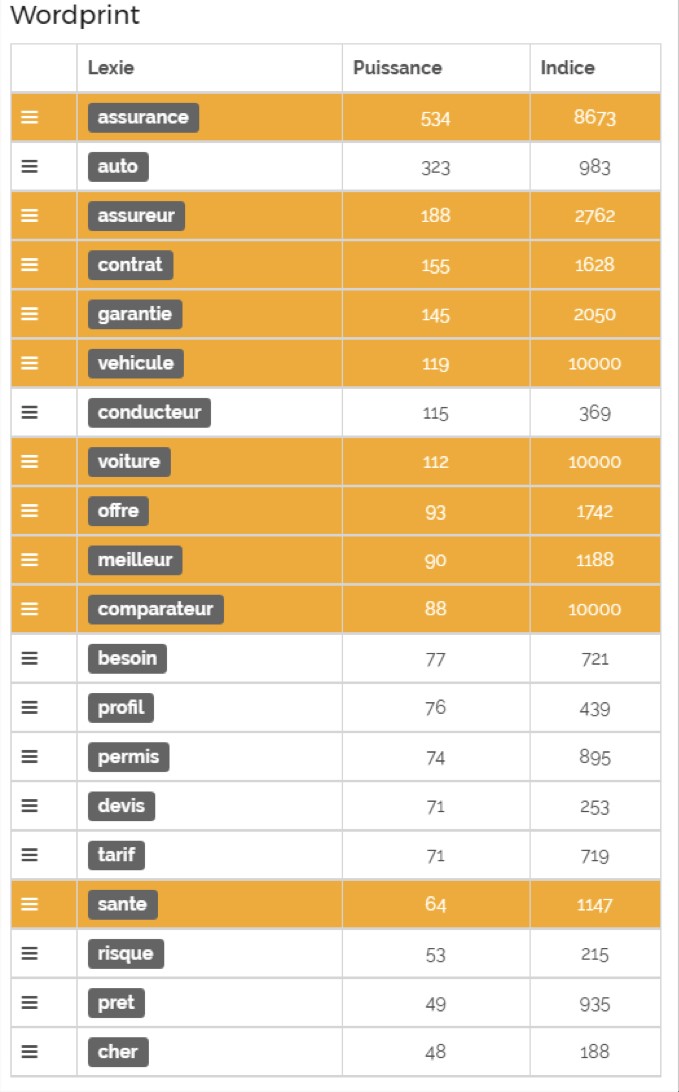The goal is to introduce you to the semantic workings of the Google search engine and the optimization of your SEO strategies and content. Let's get started with the first tutorial :-)
For a long time, it was thought that semantic optimization for organic search was limited to writing title tags and Hn tags. Since the advent of Google Panda, aimed at penalizing low-quality sites, content has become one of the major concerns of SEOs. Now, the search engine takes into account the intrinsic semantic richness related to the target keyword. How to produce quality content and above all effective from an SEO point of view? How does the search engine perceive this content? What does it really want?
SEOQuantum: the birth of a tool
From these questions, we created a tool: SEOQuantum. It is a decision-making tool for content writing. But how does it work?
In order to be as relevant as possible, the search engine considers the quality perceived by users during their visits to websites. Google's wish is above all to highlight quality content, in order to meet the user's expectations. From this observation, it is essential to study what pleases Google and to analyze the pages found in the TOP of the SERP in order to extract the main lexical fields. For more details on how the engine works, I invite you to read my article on Rankbrain and content optimization.
The results provided by the SERP are indeed a goldmine of information to exploit. Therefore, we have developed a crawler capable of extracting the textual content of web pages. This is no small task and we have on this occasion understood the difficulties encountered by the engine when it consults a site in order to analyze it (bad encoding, invalid HTML tags, spam, etc.).
Step #1 - Semantic Analysis
Let's take the example of a site wishing to optimize its content on the keyword "insurance comparator". Step #1, we launch the analysis on the keyword directly in SEOQuantum via the search bar:

The analysis is launched, it usually takes less than a minute.
Step #2 - Wordprint Study
We have invented a semantic concept called the WordPrint. Wordprints are SEO semantic notions specific to each of your keywords: it's the unique "DNA" of your keyword. It corresponds to Google's "expectations" in terms of lexical fields.
The WordPrint consists of a list of terms identified for the query "insurance comparator", with the following two columns:
- Power: number of times the term was found in the corpus analysis, this is the frequency (quantitative aspect).
- Index: The index is based on the BM25 model, an advanced version of TF*IDF. The indispensable lexies are highlighted (orange background). These terms have been identified as omnipresent in the analysis. Remember: the higher the BM25 value, the more important the lexie is, even if its frequency is low.

The idea is then to ask copywriters to use the lexies proposed in the table in their content writing. The lexies highlighted in ORANGE are very important (even indispensable). They appear on most results (even at low frequency).
The downside is that with this lexie frequency technique, you can quickly find yourself over-optimizing pages with a set of words. Make sure your copywriter does not drift into keyword stuffing (a reprehensible optimization technique by search engines) and that the content is pleasant to read for the user.
We will see in a future tutorial the notion of semantic deep learning, allowing us to go even further in content optimization.
### And you?
And you, what is your experience with content optimization? Leave a comment to share your recommendations!
Need to go further?
If you need to delve deeper into the topic, the editorial team recommends the following 5 contents:

